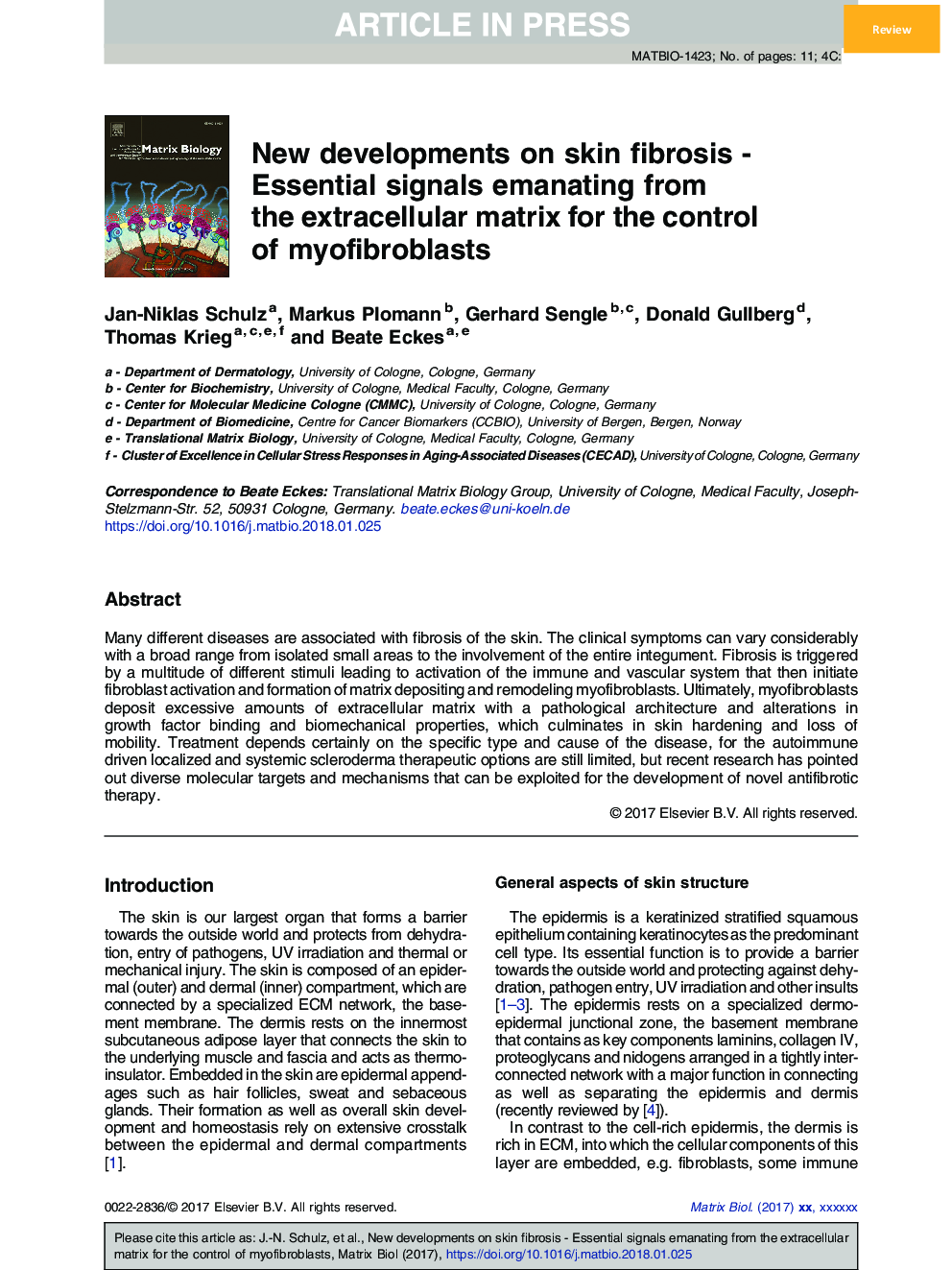| Article ID | Journal | Published Year | Pages | File Type |
|---|---|---|---|---|
| 8455040 | Matrix Biology | 2018 | 11 Pages |
Abstract
Many different diseases are associated with fibrosis of the skin. The clinical symptoms can vary considerably with a broad range from isolated small areas to the involvement of the entire integument. Fibrosis is triggered by a multitude of different stimuli leading to activation of the immune and vascular system that then initiate fibroblast activation and formation of matrix depositing and remodeling myofibroblasts. Ultimately, myofibroblasts deposit excessive amounts of extracellular matrix with a pathological architecture and alterations in growth factor binding and biomechanical properties, which culminates in skin hardening and loss of mobility. Treatment depends certainly on the specific type and cause of the disease, for the autoimmune driven localized and systemic scleroderma therapeutic options are still limited, but recent research has pointed out diverse molecular targets and mechanisms that can be exploited for the development of novel antifibrotic therapy.
Keywords
Related Topics
Life Sciences
Biochemistry, Genetics and Molecular Biology
Cancer Research
Authors
Jan-Niklas Schulz, Markus Plomann, Gerhard Sengle, Donald Gullberg, Thomas Krieg, Beate Eckes,
